A single day group Wader Spectacular tour today. There was a small amount of mist first thing but it burnt off quickly and then it was another bright, sunny and warm day.
Every Spectacular is different. When we got out onto the seawall, the waders were much more settled today, sprawled out across the mud in vast flocks. The light was perfect, the slicks of Knot golden in the low morning sunshine.
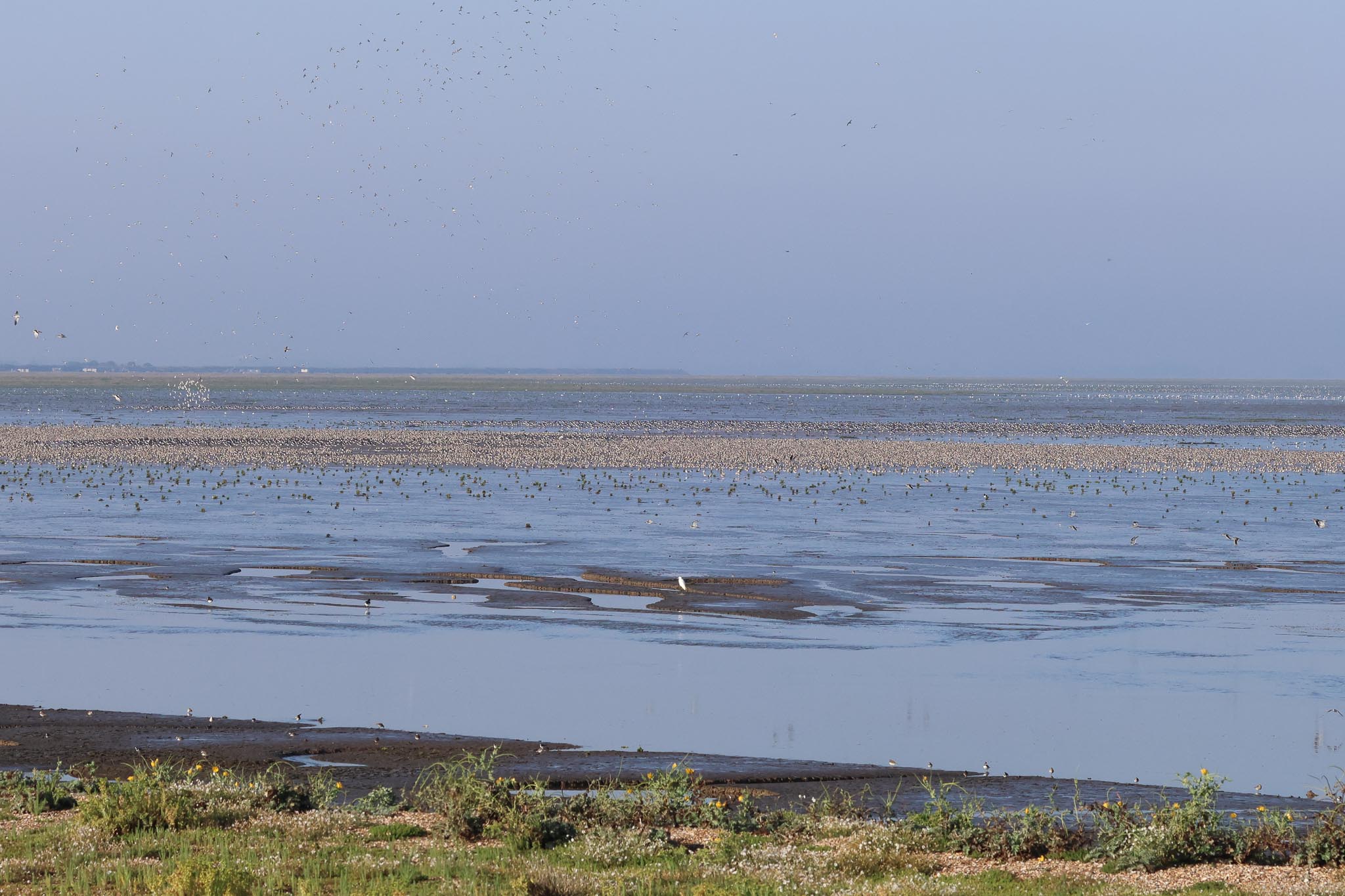
There were lots of small waders on the mud in front of us – checking through them we found three juvenile Curlew Sandpipers and at least five juvenile Little Stints today, in with the commoner Ringed Plovers, Sanderling, Turnstone and Dunlin. The tide was coming in quickly and they didn’t linger, constantly flying off and landing again further down. There was a small flock of Golden Plover out on the mud further back, which came in past us and several Mediterranean Gulls flew past over the edge of the water.
The huge flocks of waders were shifting ahead of the tide too – the Knot closest to the edge of the water occasionally rising up and flying over the others to land again a little higher up, the flocks occasionally twisting into different shapes as they flew, flashing dark and light as they turned in the sunlight.
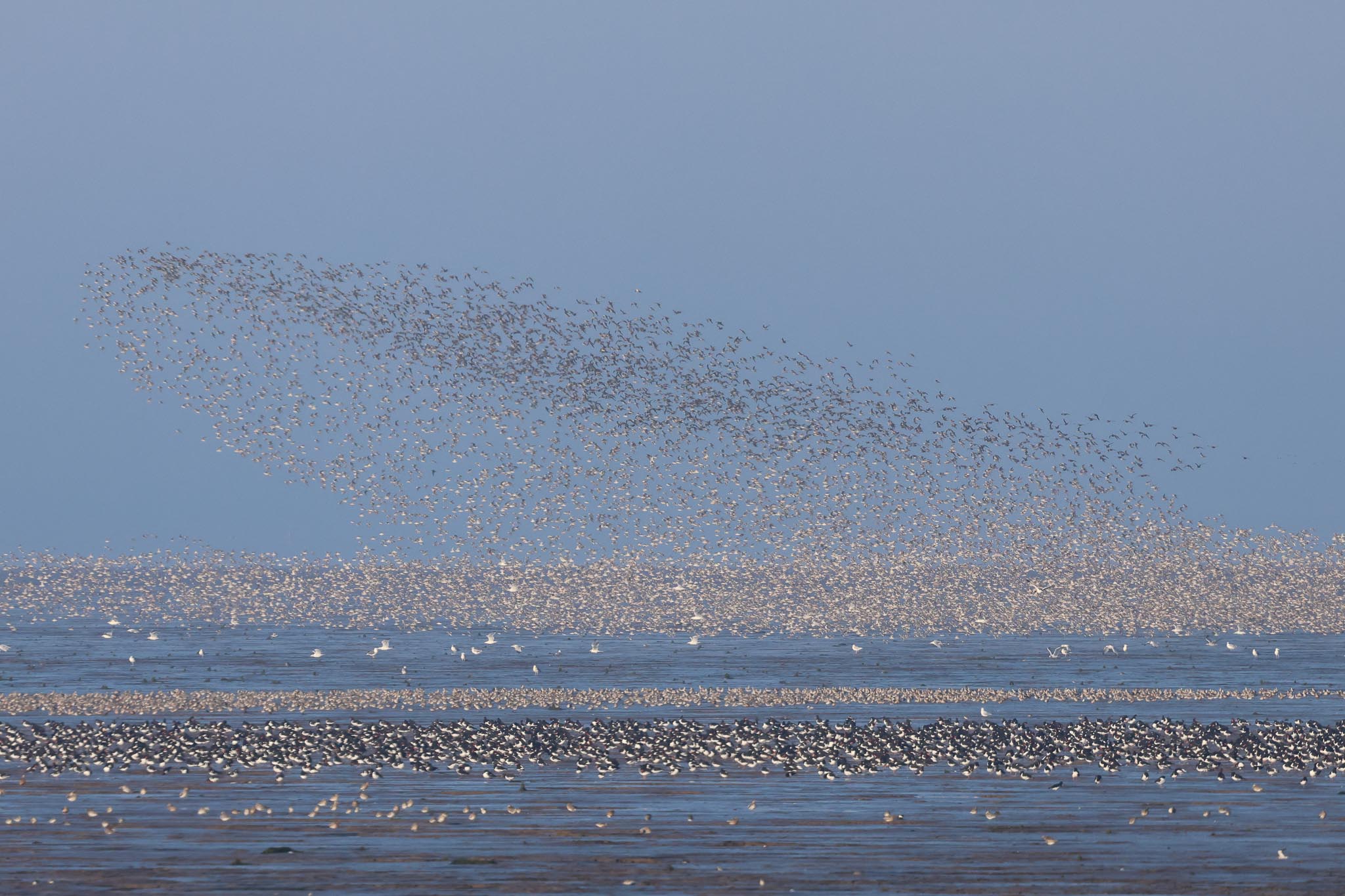
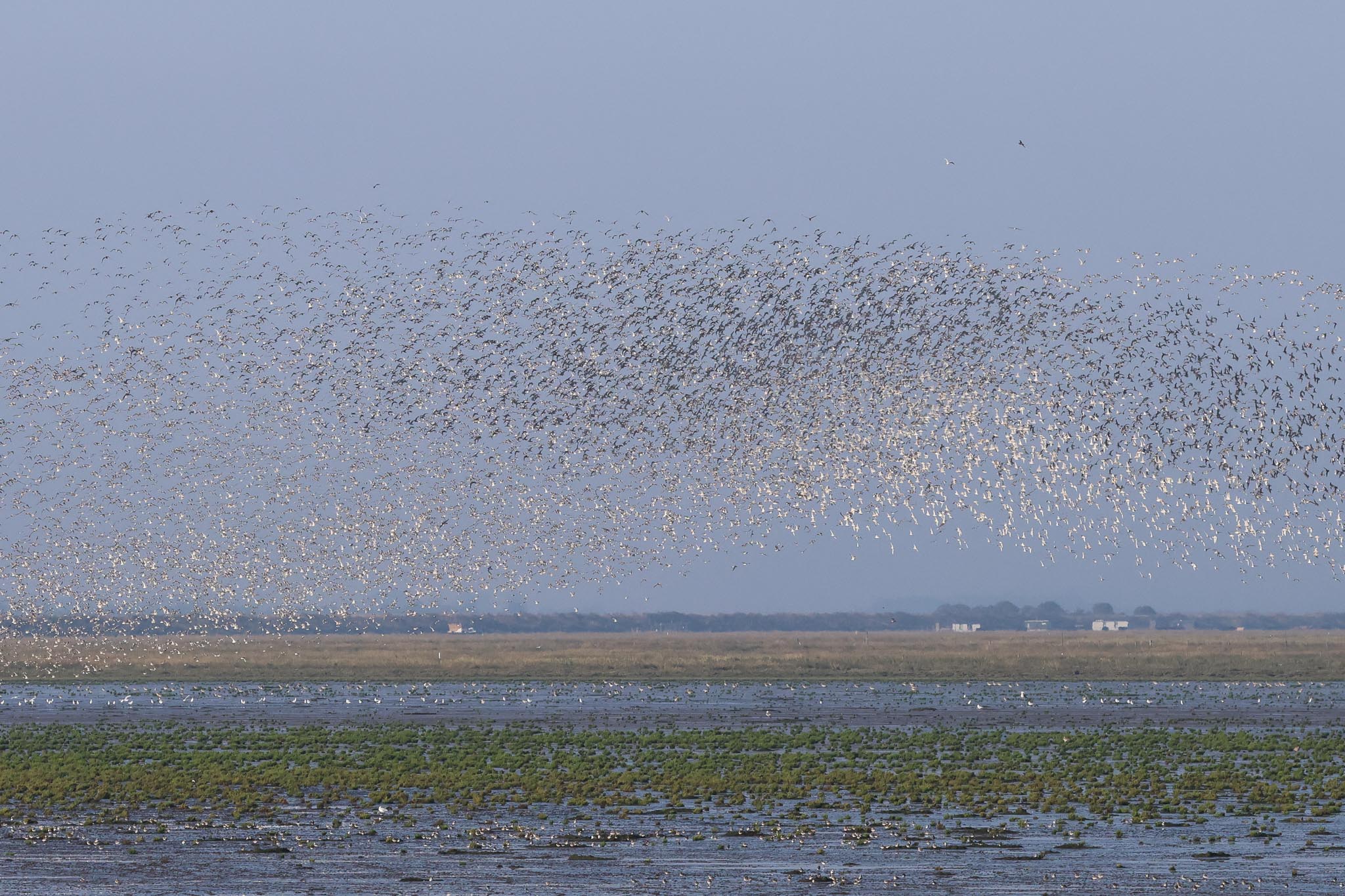
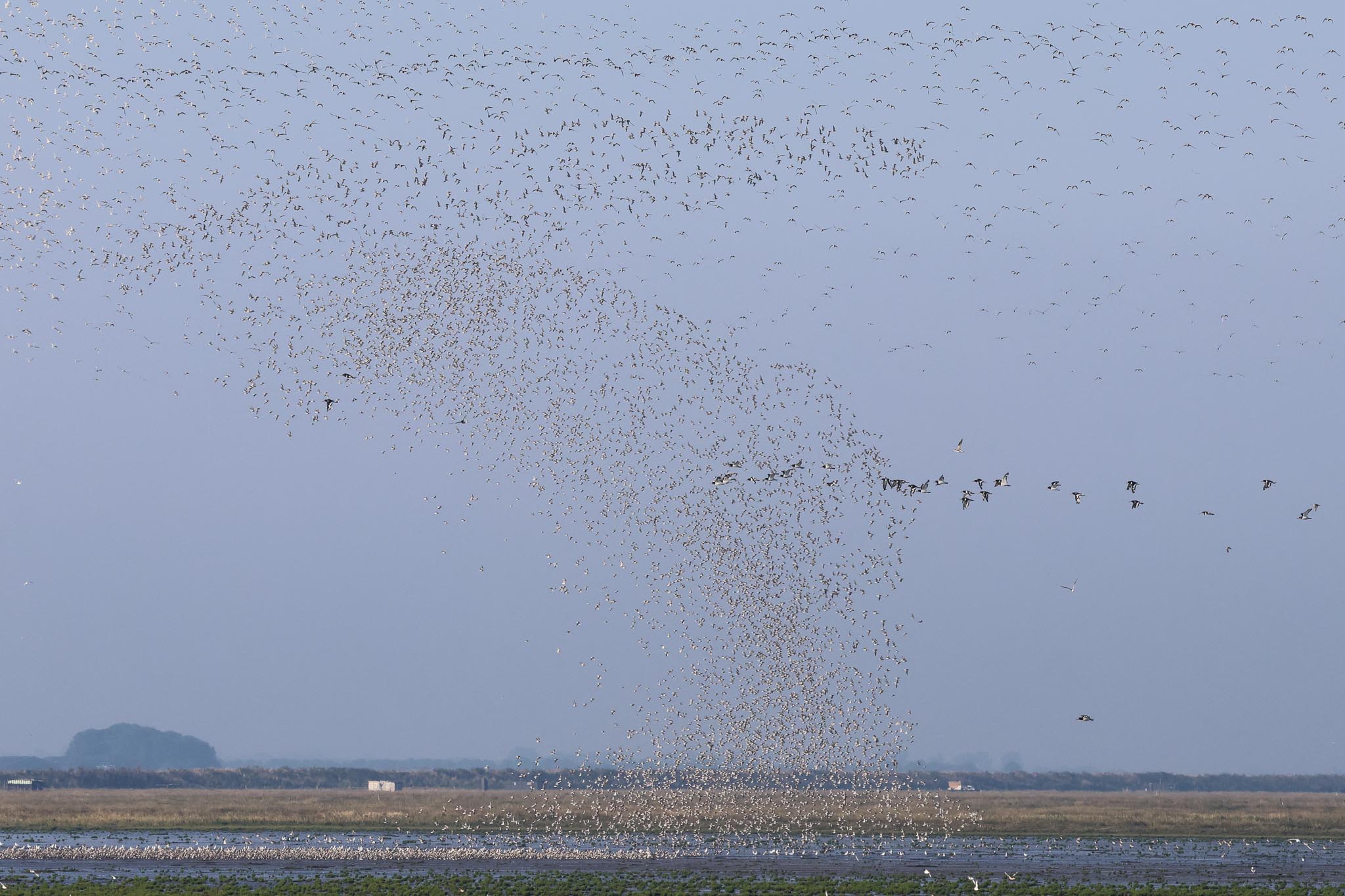
Walking on down, we tried to keep ahead of the rapidly rising water, but we stopped occasionally to watch the birds out on the mud. Through the scope, we could see that the waders were not static but marching away from the tide, the whole mass appearing to flow over the surface of the mud like mercury, a mixture of mainly Knot and Bar-tailed Godwits and a large mob of Oystercatchers.
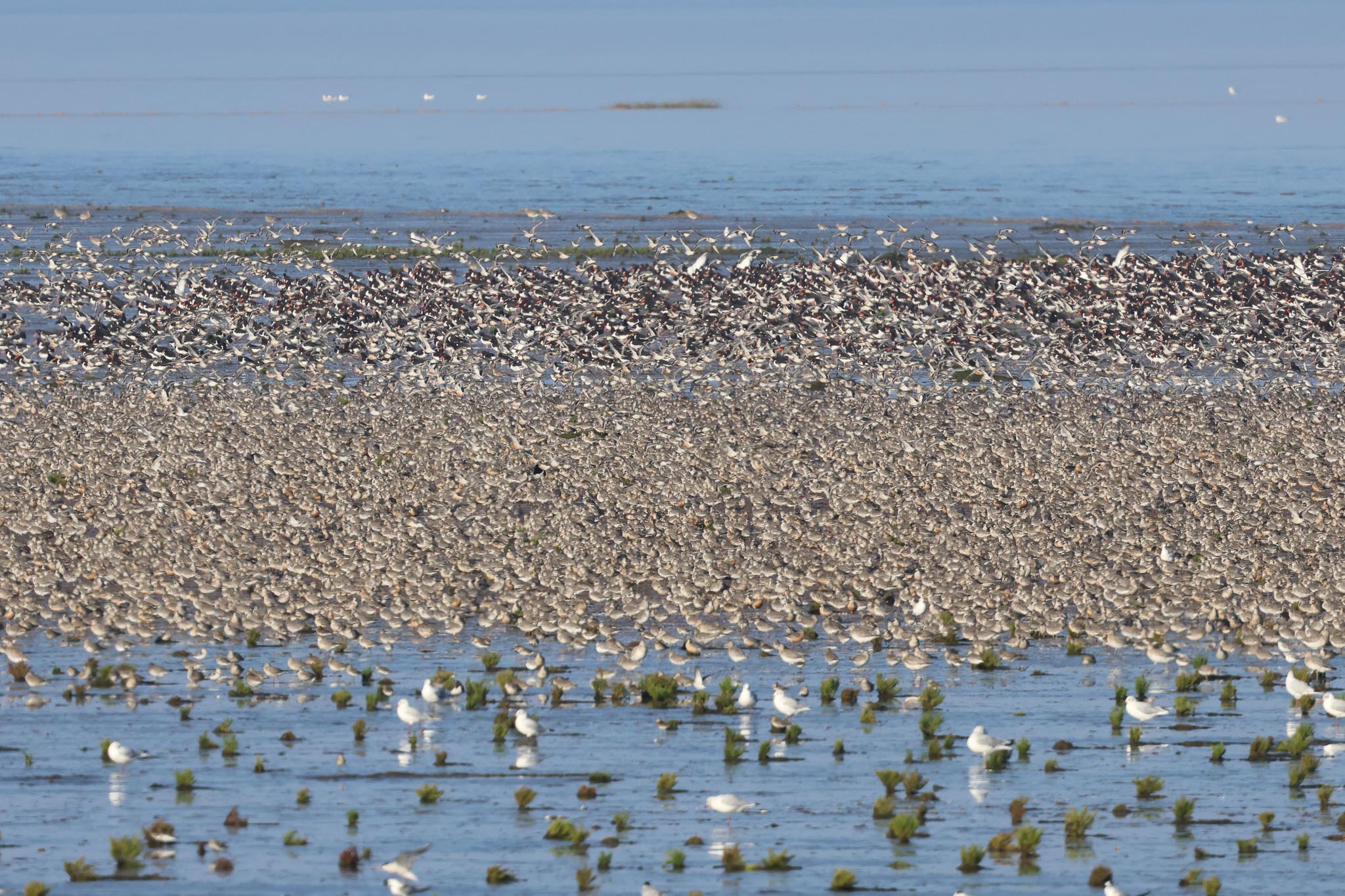
Gradually, the waders were squashed further and further towards the last corner of Wash. The Oystercatchers started to peel off first, coming up in a succession of small groups, flying in overhead piping noisily. The Knot continued to fly up and land again down into an ever decreasing area of mud, becoming packed ever tighter.
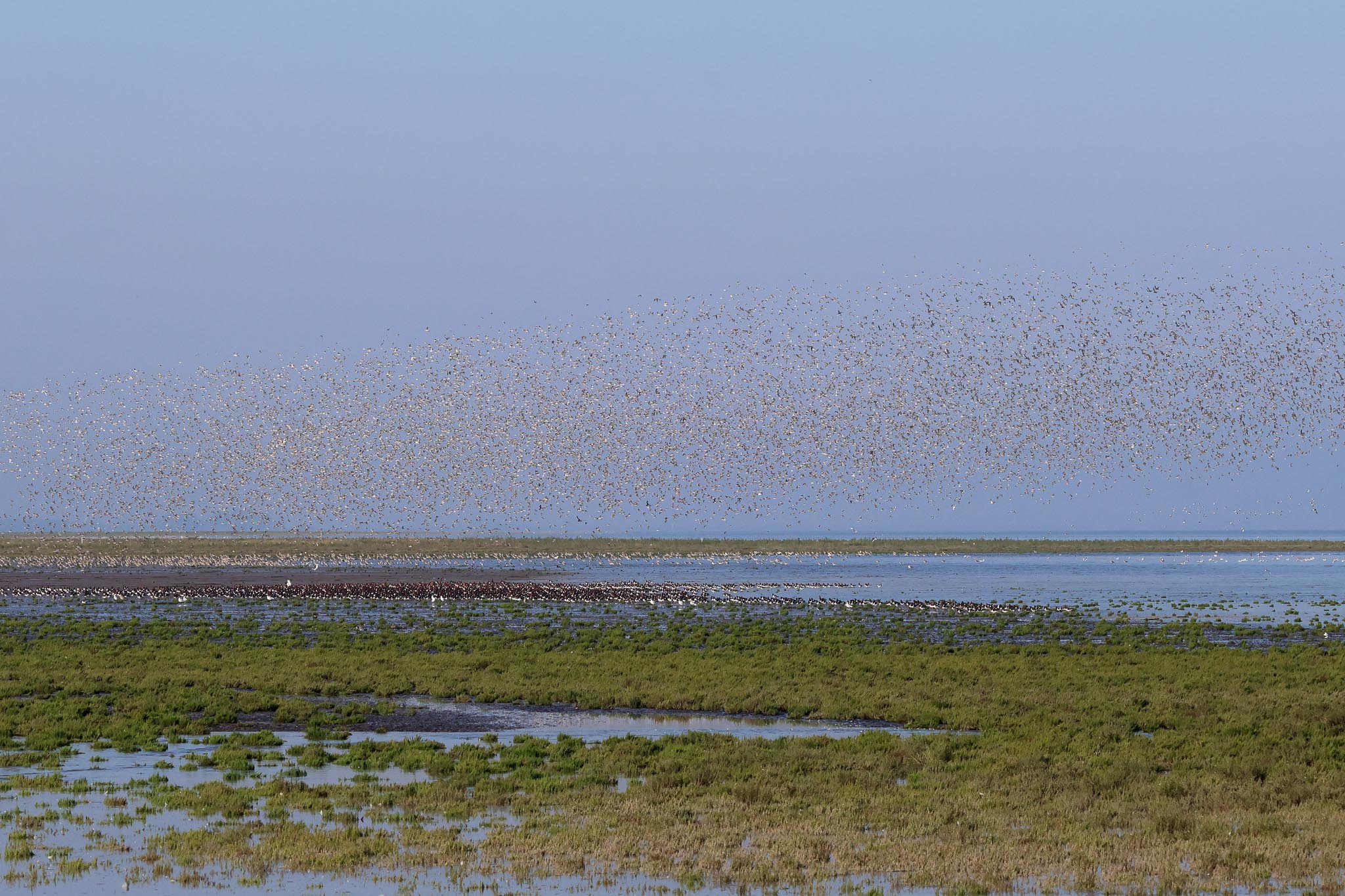
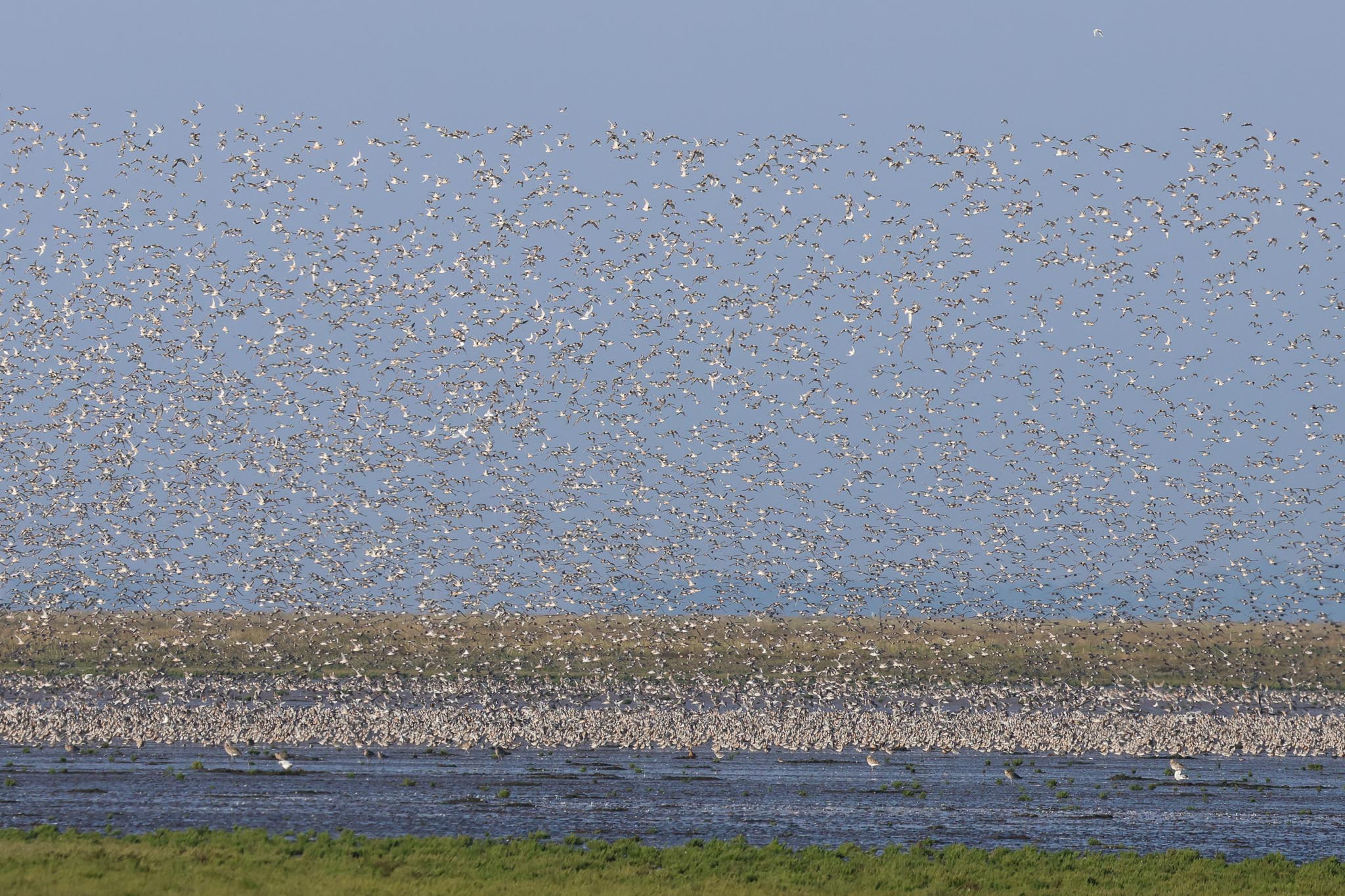
Eventually the Knot decided they would have to leave the Wash and a huge flock tens of thousands strong took to the air, an amazing sight. They flew towards where we were standing, between the Wash and the Pit, and came low over our heads. All we could hear was the beating of thousands of pairs of wings. Stunning.
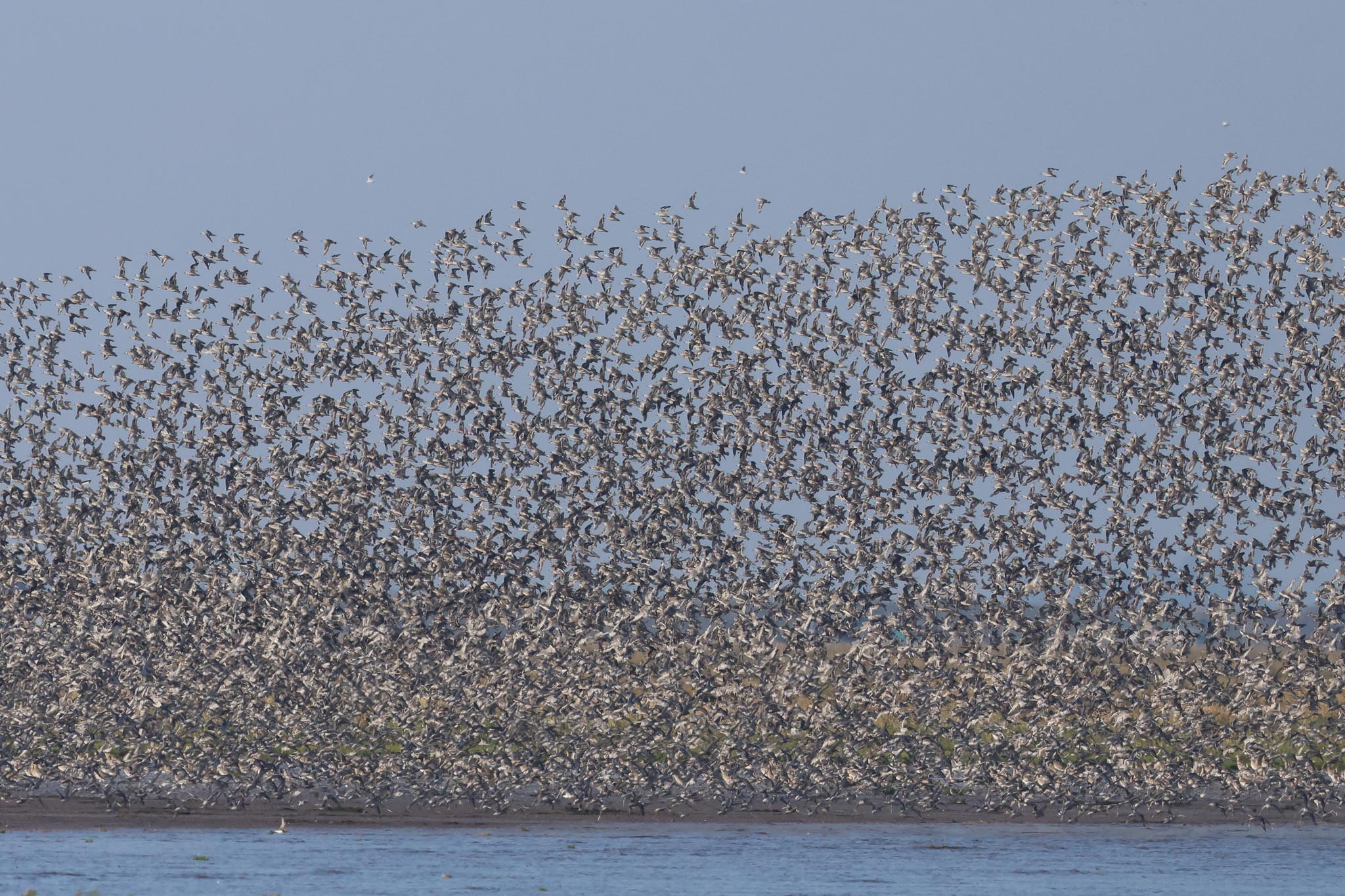
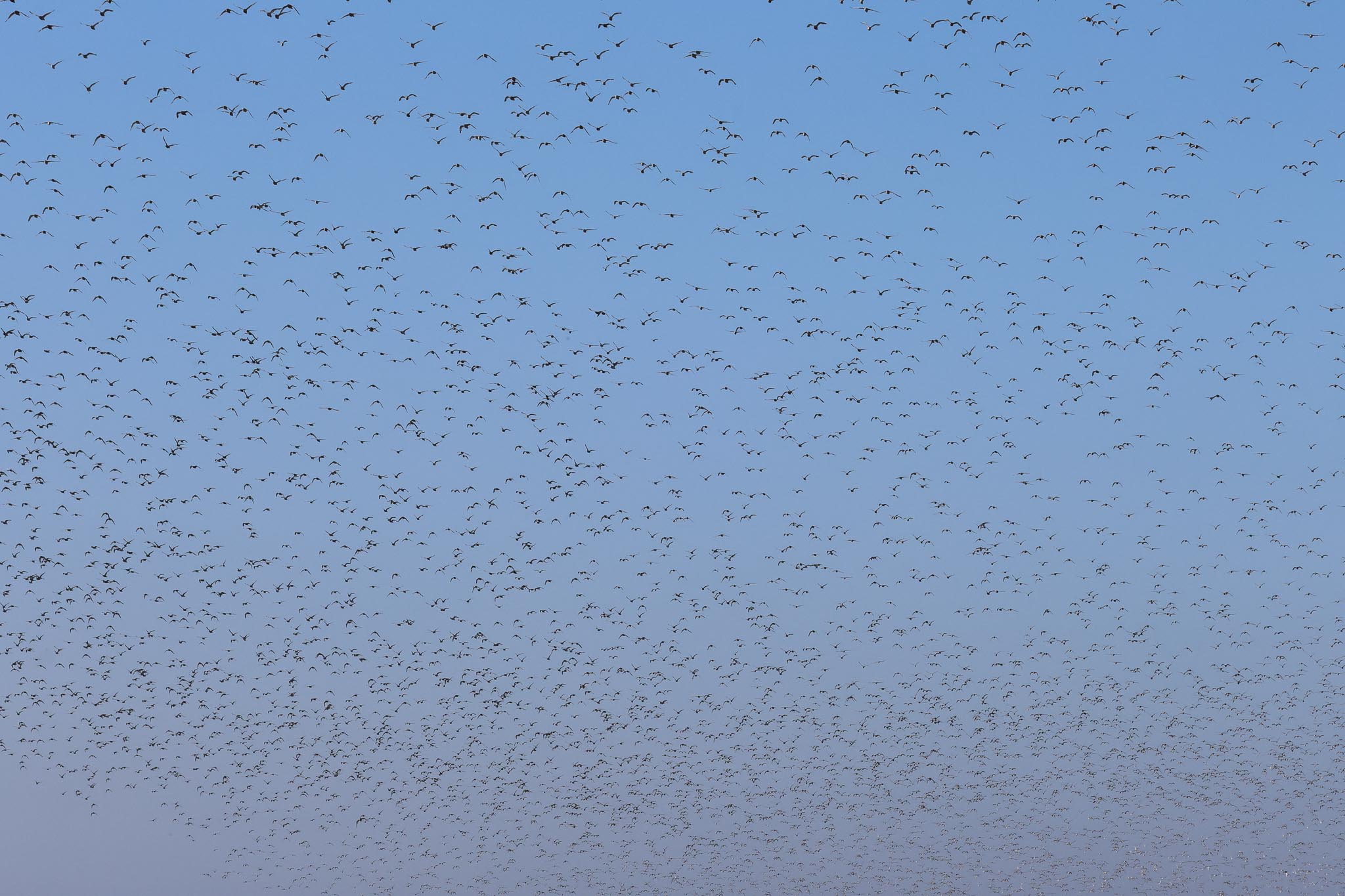
The airspace over the Pit was very congested – we turned to watch the Knot whirling round into the sunshine behind us. We could see smoky lines of birds descending down onto the islands, out of view, while the huge flocks circled above.
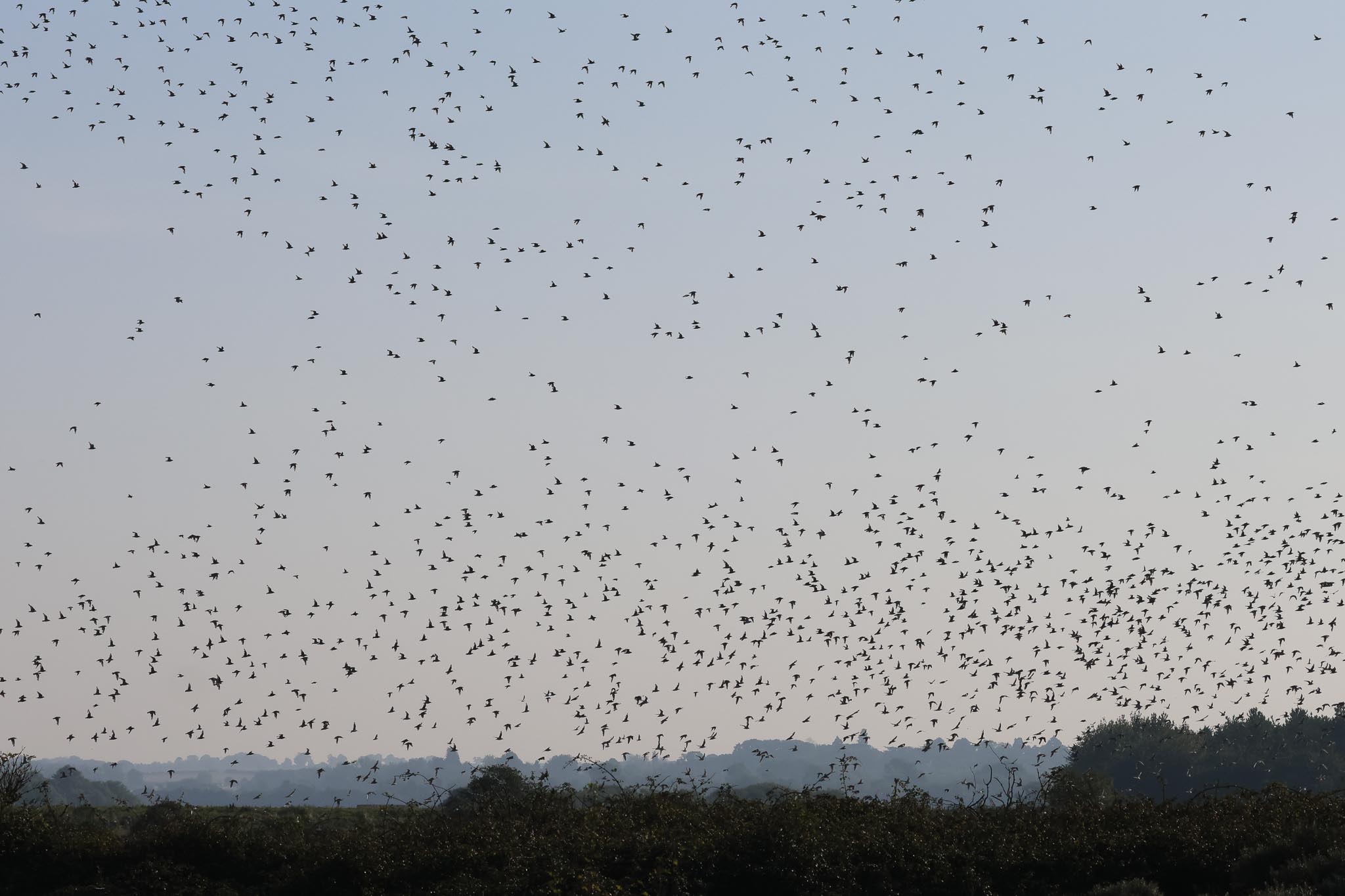
Another huge wave of Knot came up off the mud and in over our heads, but there was nowhere for them to go, so they towered up into the sky. More birds turned back from the Pit – there was obviously not enough room for them down on the islands. We stood or lay on the grass and watched thousands of Knot criss-crossing high above us. Mesmerising.
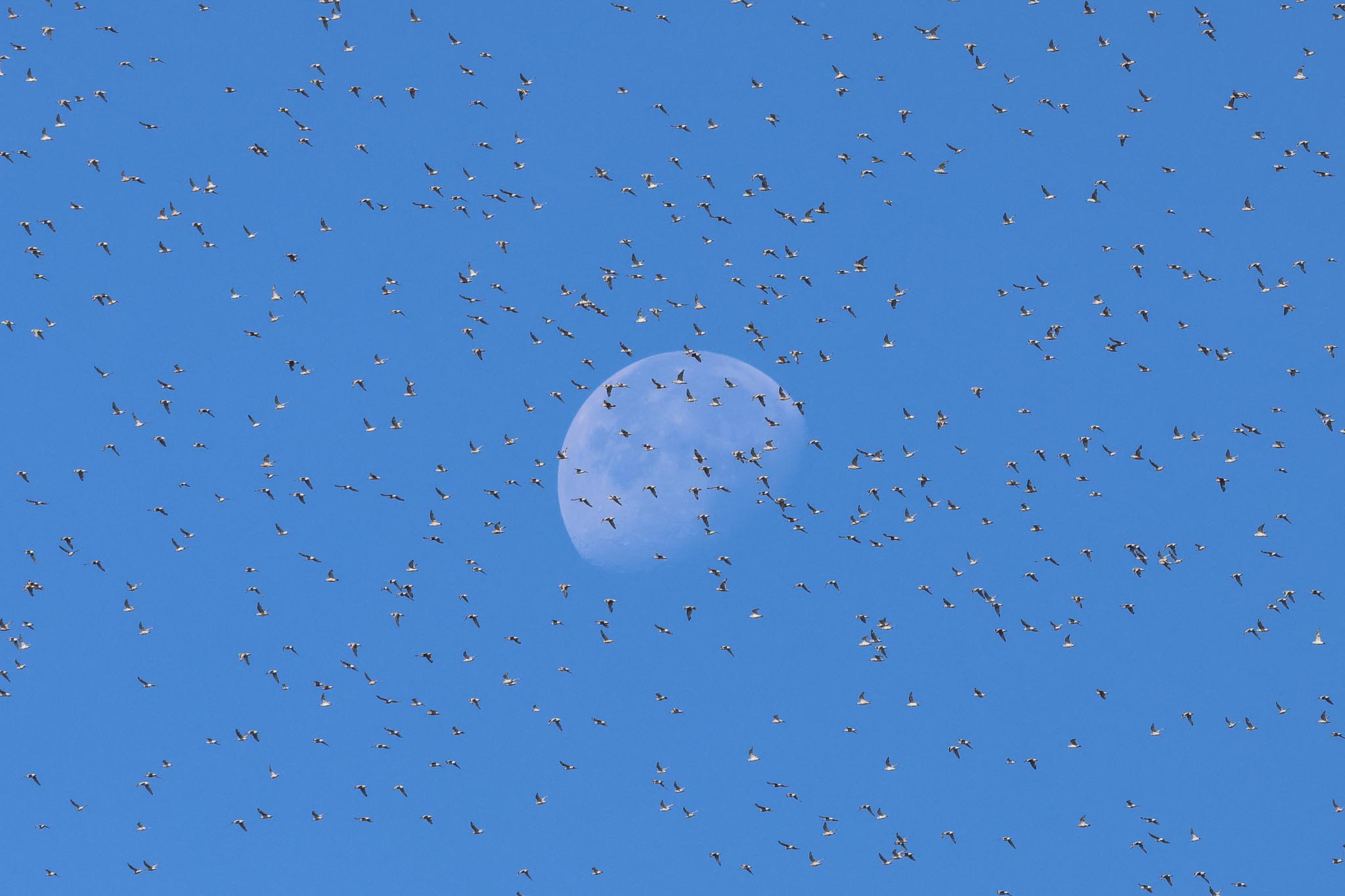
Some of the Knot headed back out over the Wash, others went ever higher to the point they were only just visible when they caught the sunlight, forming into lines, squadrons high in the blue sky. Higher and higher, further and further out, until they were eventually lost to view. They would probably spend the high tide flying up over the water until the mud reappeared.
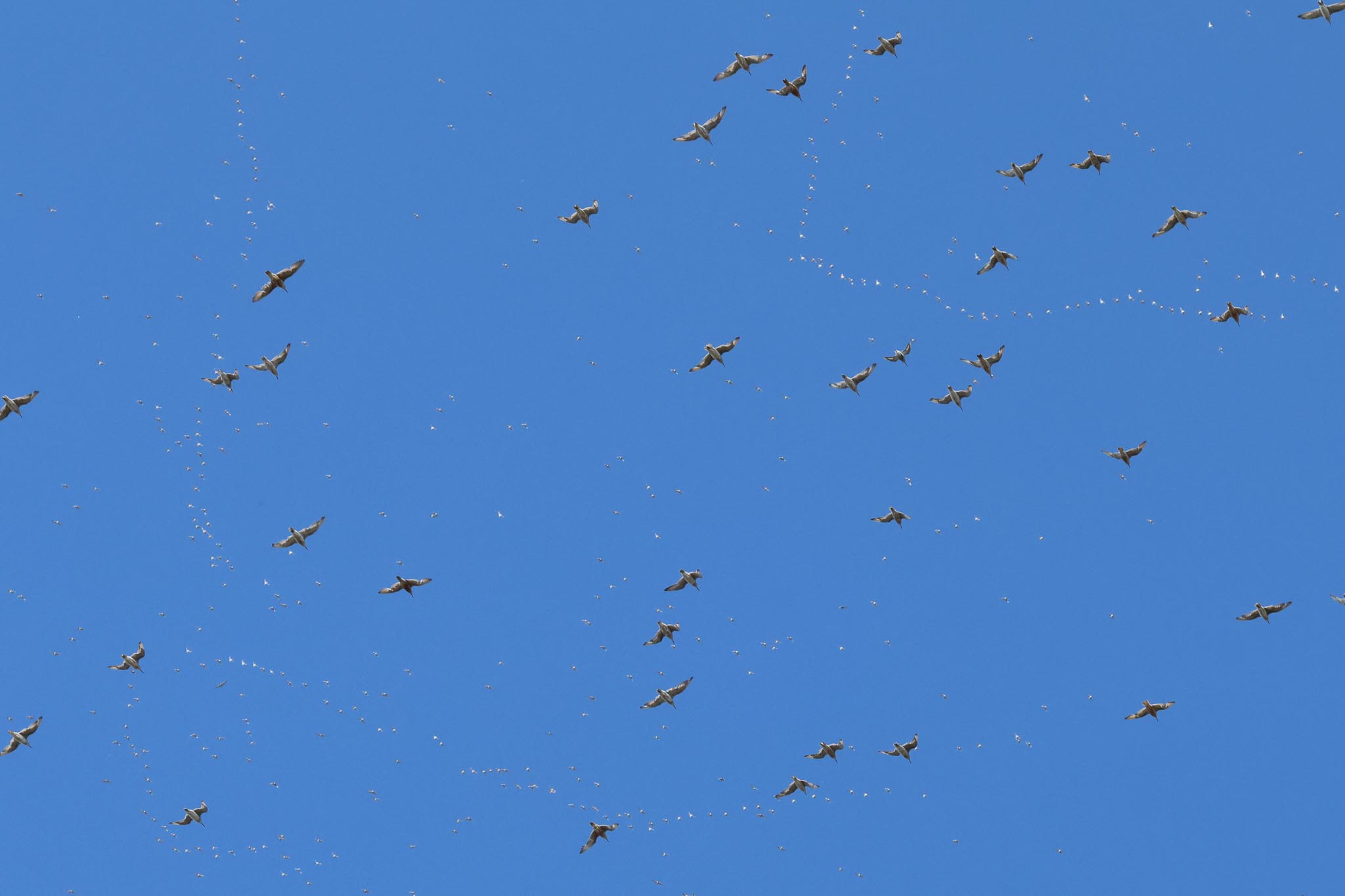
A single Brent Goose swam past in front of us. We walked down to the hides, stopping to look at the Sea Aster Bees swarming around the short grass as we passed. South Screen looked pretty full so we continued on to Knots Landing which was not as busy as it had been yesterday.
There were more Knot down this end of the Pit today, packed onto the island in front of the hide. They are very close here, through the one-way glass, so we had a great view of them. Some are still sporting different amounts of their orange breeding plumage still, others already in their grey winter garb.
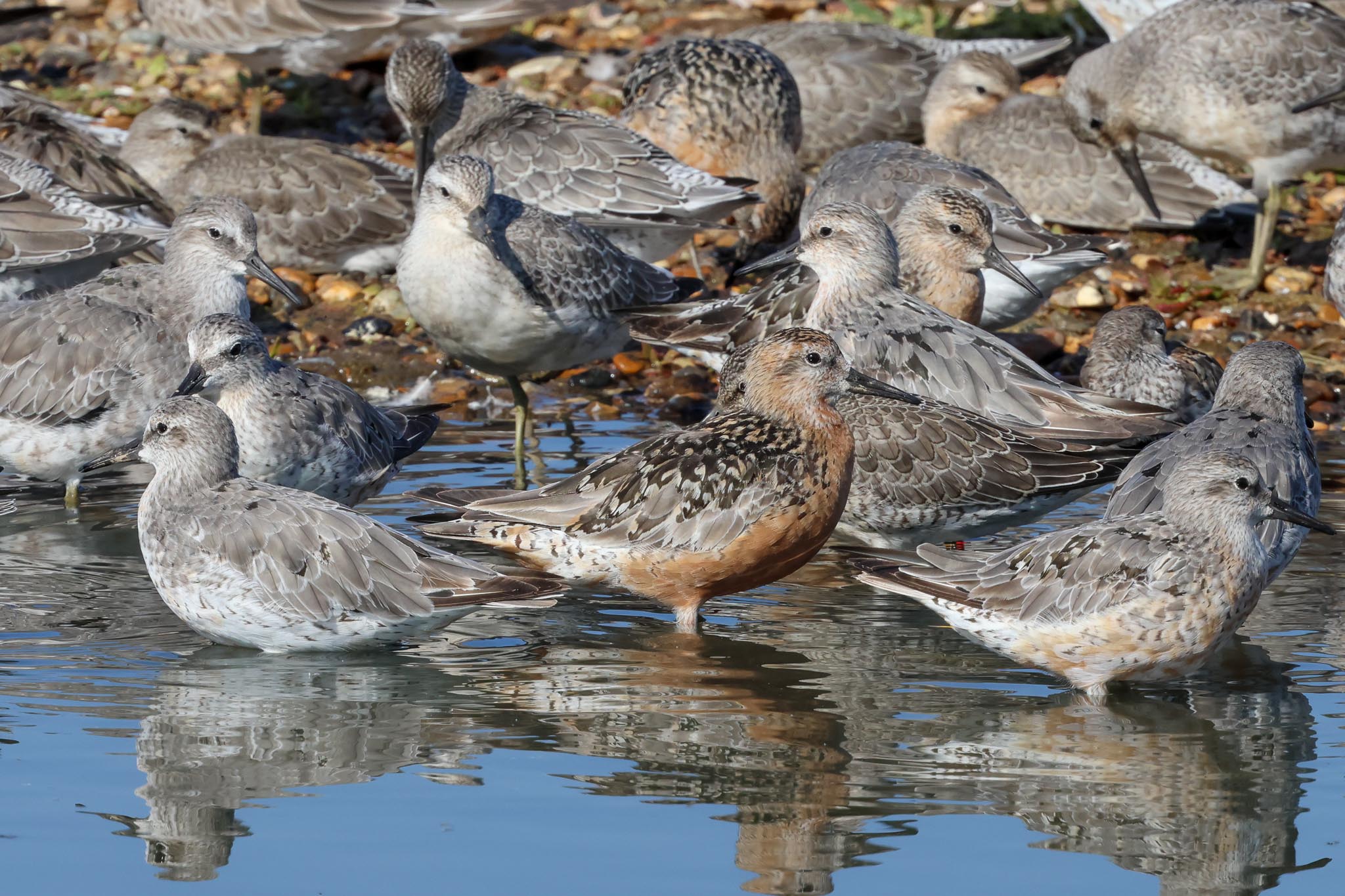
The Knot were shuffling and dozing. Something spooked them and a group flew up from the edge, the remainder with their heads up, pushed round, like a wave going through the middle of the throng. Later a Little Egret came round the edge of the island, fishing in the shallow water, and the Knot on the edge scattered ahead of it, causing more shuffling of the flocks.
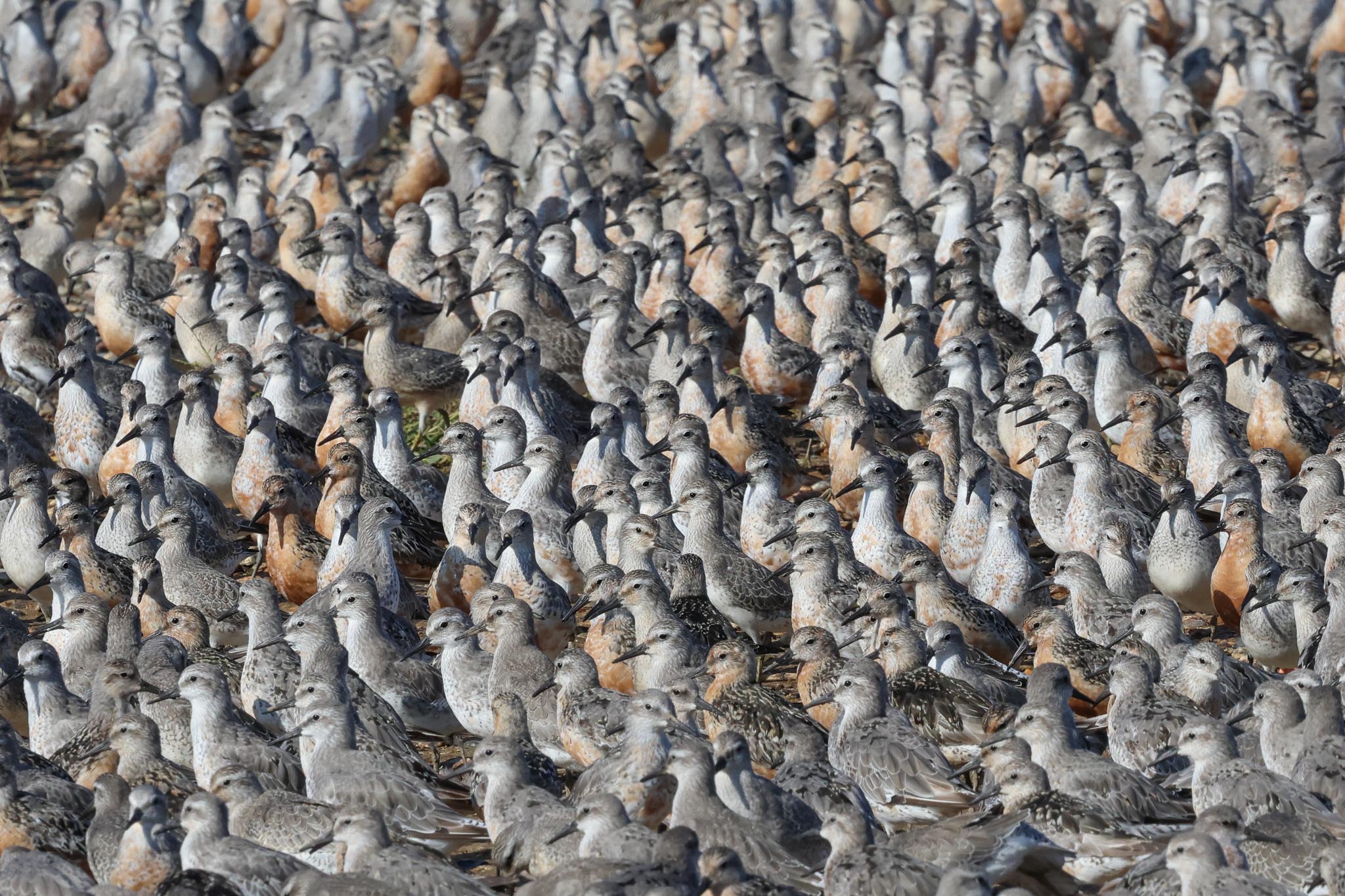
There were other waders here too. We had great views of a juvenile Little Ringed Plover and a Common Sandpiper which were feeding along the edge of the shingle right in front of the hide. A Green Sandpiper flew off from the back of one of the islands.
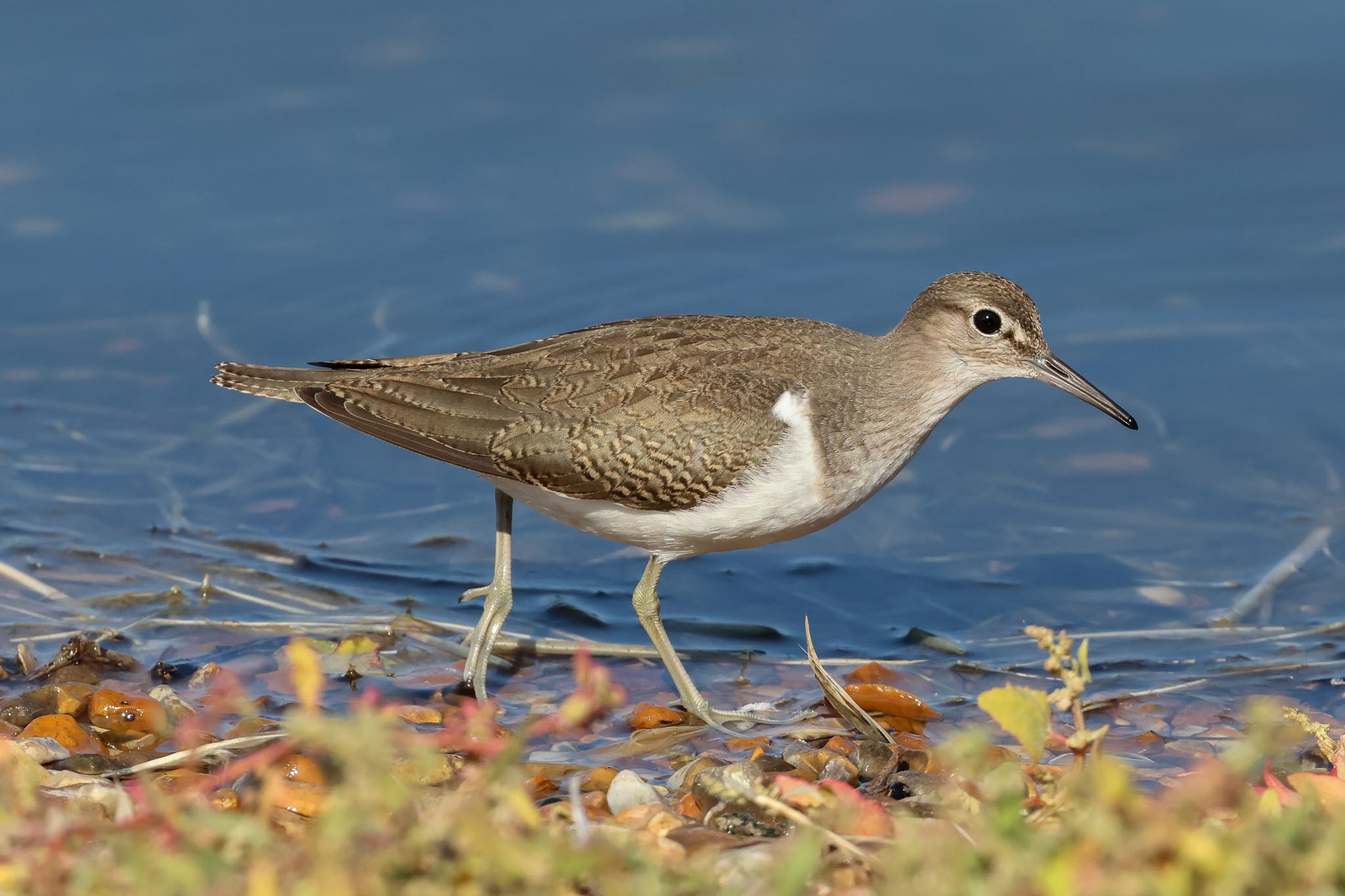
A Little Stint dropped in on the water’s edge right in front of us too. Wonderful close up views of this our tiniest of waders. It looked around nervously, then picked its way off round the shore to the left of the hide.
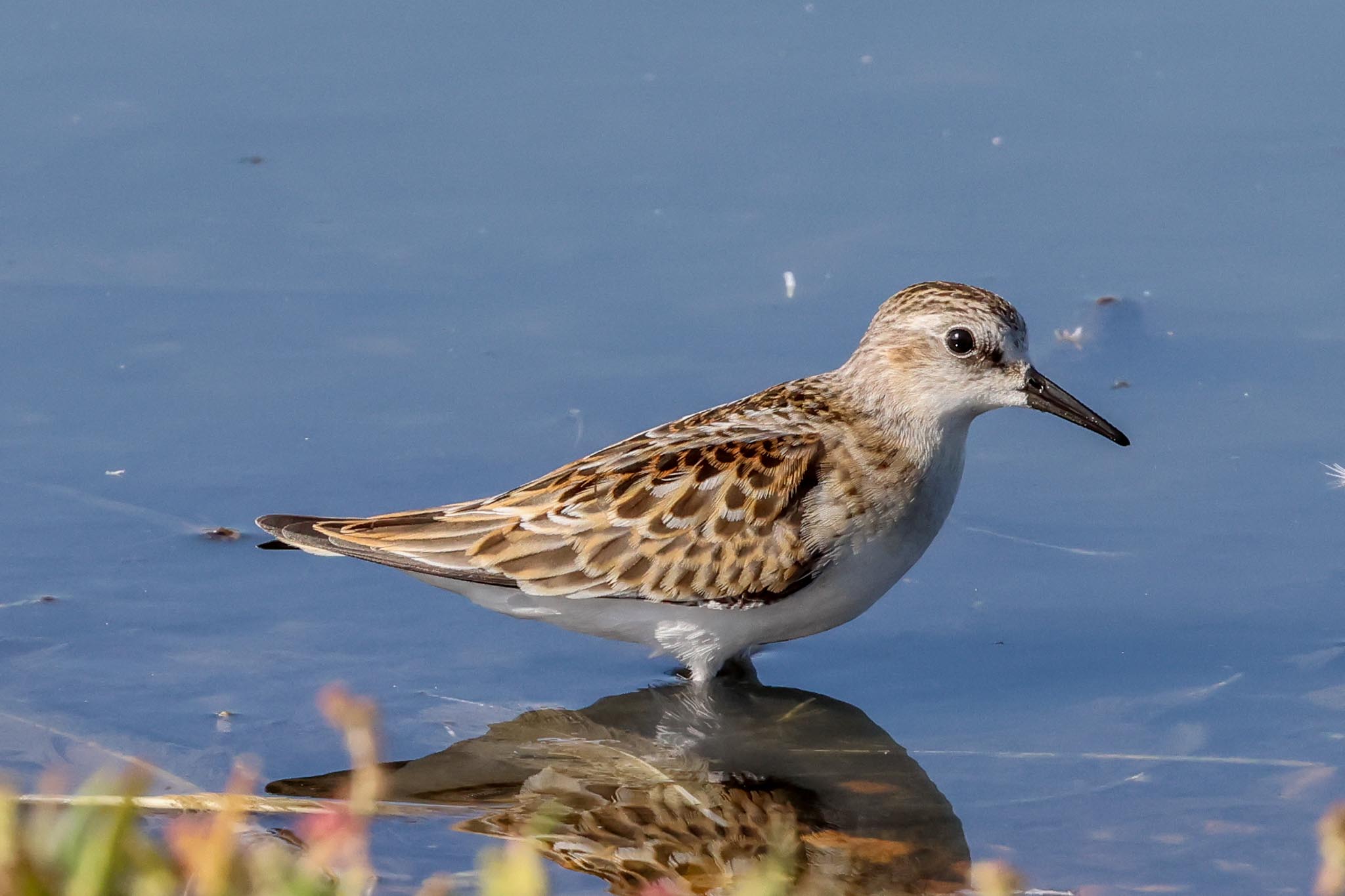
There were a few Bar-tailed Godwits in with the Black-tailed Godwits around the edges of the islands too, juveniles, their sandier upperparts with bold dark markings. A single Spotted Redshank was in with the Common Redshanks along the edge of the water to the right of the hide – through the scope, we had a good view of its longer, needle-fine bill when it woke up. Two more Spotted Redshanks were out in the middle with the Greylag Geese further up the Pit. There were only two or three Spoonbills that we could see here today, roosting with the Little Egrets on the bank on one side and mostly doing what Spoonbills like to do best – sleeping!
It was nearly an hour after high tide already, so we made our way back round to the edge of the Wash. The first wave of Knot came out of the Pit as we walked up, over the bank before dropping down to fly low over the water and out to the corner where the mud was already starting to reappear. We positioned ourselves and more Knot came out, in a smaller number of larger waves today, exploding out over the bank.
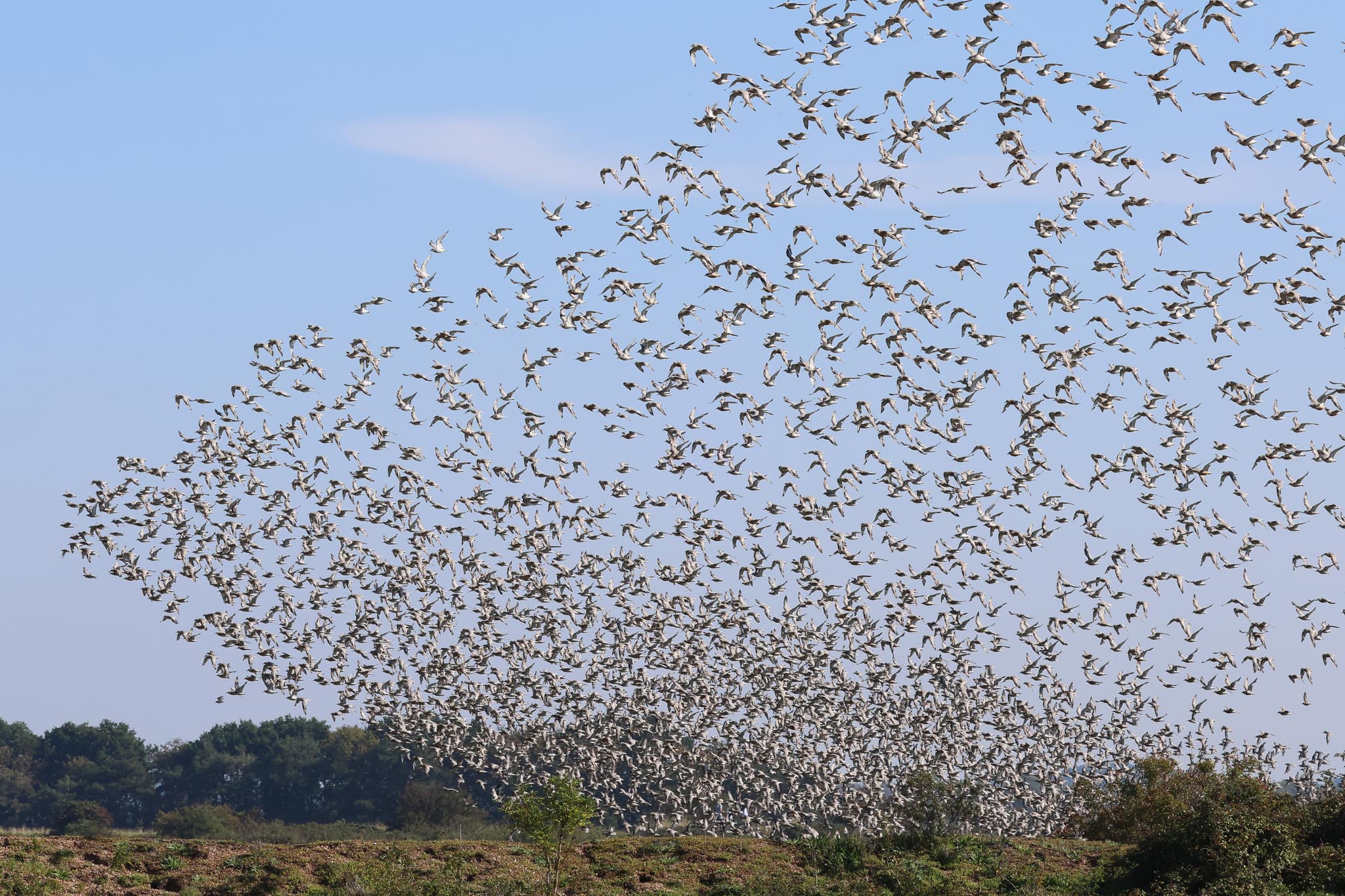
Between the waves of Knot coming back out, we scanned the mud. There were more Grey Plover visible now, over in the corner, some still sporting the remnants of their summer black faces and bellies. Several Common Terns patrolled up and down over the rapidly disappearing water in front of us.
Eventually, the flow of Knot out of the Pit dried up, and we decided to walk back. There were lots of Sanderling gathered on the beach further up, so we stopped for a closer look. From a distance they just looked like lots of white pebbles on the rocky shore.
We drove round to Titchwell for lunch in the picnic area. Afterwards, we had a quick look out on the reserve. There was a bit of a breeze when we got out of the trees now, which was nice as it meant it didn’t feel too hot here on the coast. When we got up to the Freshmarsh, we could see a large group of Spoonbills out in the middle. We counted 32 this afternoon, and some were even awake so we could see their spoon-shaped bills.
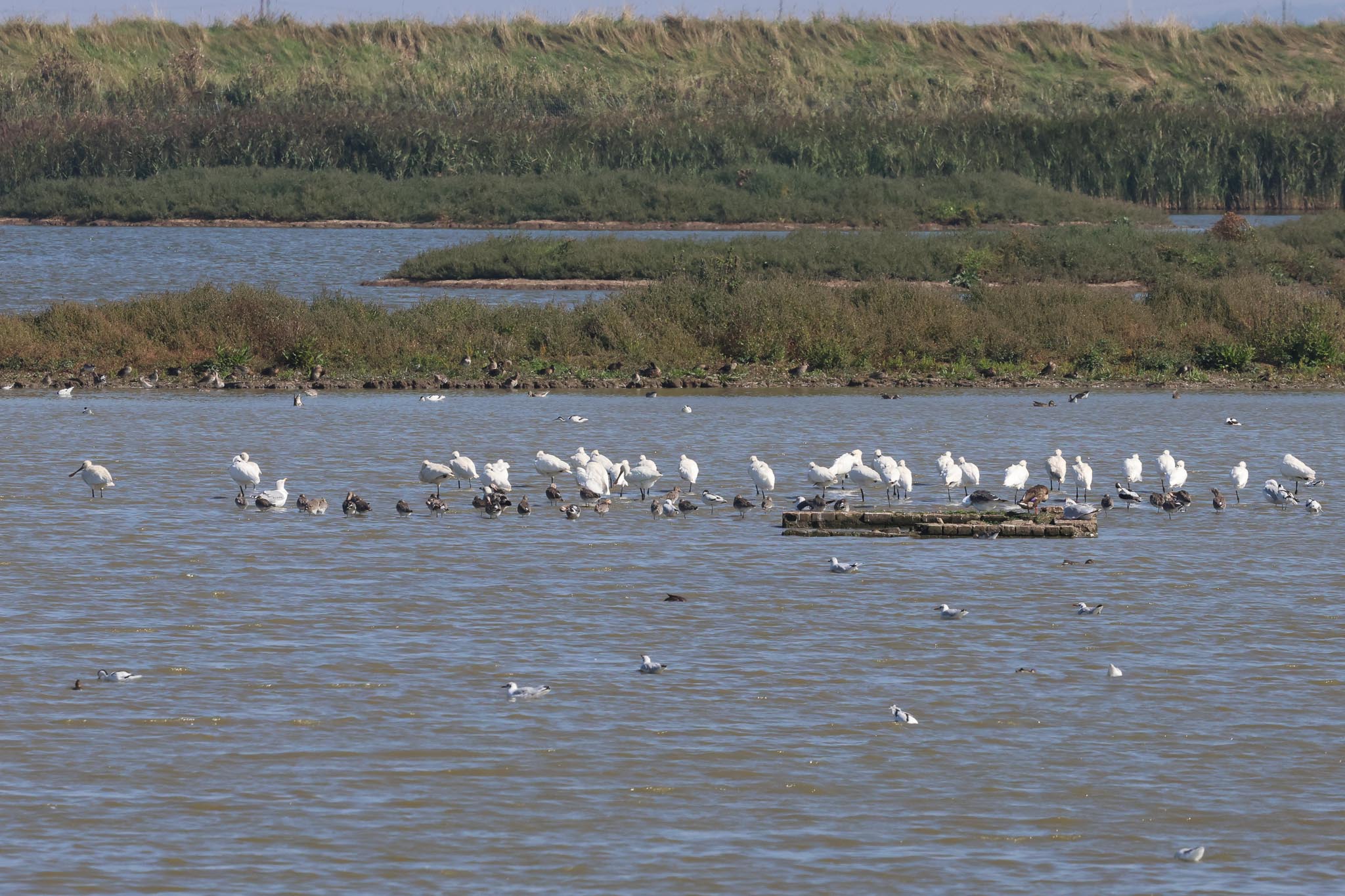
There were lots of Avocets feeding out in the water and a good number of Black-tailed Godwits too. A small group of Ruff were feeding close to the path, below the reeds, adult males in grey non-breeding plumage, one with a much whiter head than the others. The ducks are not looking their best at this time of the year, the drakes in their dull eclipse plumage, but we worked our way through them, Teal, Shoveler, Mallard, Gadwall and Wigeon.
There had been no reports of the American Golden Plover today, and there was no sign of it with the large flock of European Golden Plover which were gathered on the mud on the next compartment up, by the path. We stopped to admire them through the scope, as we double checked. Something spooked them and their whirled round in front of us, before dropping back down – false alarm! We put the scope on a Lapwing on the edge of the new bund, to admire its stunning metallic upperpart colours shining in the sunshine.
The American Golden Plover had been on the further compartment, out from Parrinder Hide, the last couple of days, so we thought we would walk round to double check whether there was any sign of it there. We scanned along the grassy spit and there it was, just where we had seen it yesterday! It disappeared round behind the spit, then came back over the top, having a go at a Golden Plover as it passed and bossing a couple of Lapwings too. It settled down on the near edge of the spit where we all had a good look at it through the scope.
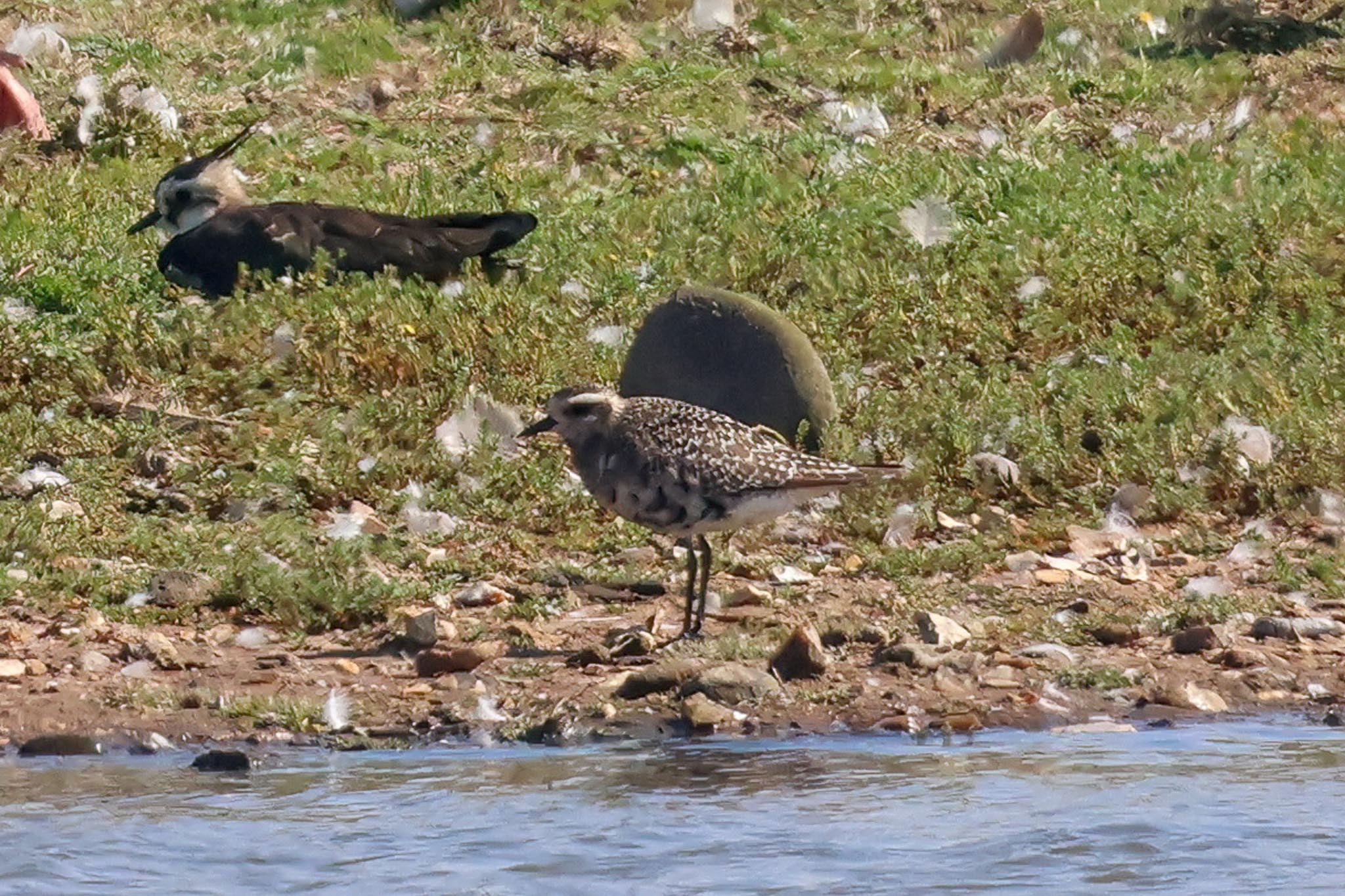
We wanted to have a quick look at the Wasp Spiders by the main path further up (the banks on the Parrinder path have been strimmed and the ones which were along there have now disappeared!). We found a couple of webs on the bank opposite Volunteer Marsh – the first of the Wasp Spiders was on the back side of the web, so we could only see it from underneath, but the second further along was on the right side, even if it was being blown about a bit in the breeze.
There were a couple of nice close Curlew on the mud in the channel at the far end of Volunteer Marsh so we stopped to get those in the scope. Otherwise, we could only see several Common Redshanks in the channel further along. Some locals coming back from the beach told us that there wasn’t much out there today, so with time running out we decided to call it a day and make our way slowly back. Another Spectacular day in NW Norfolk!
















